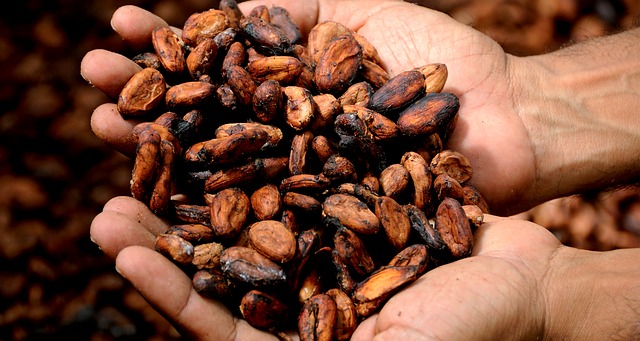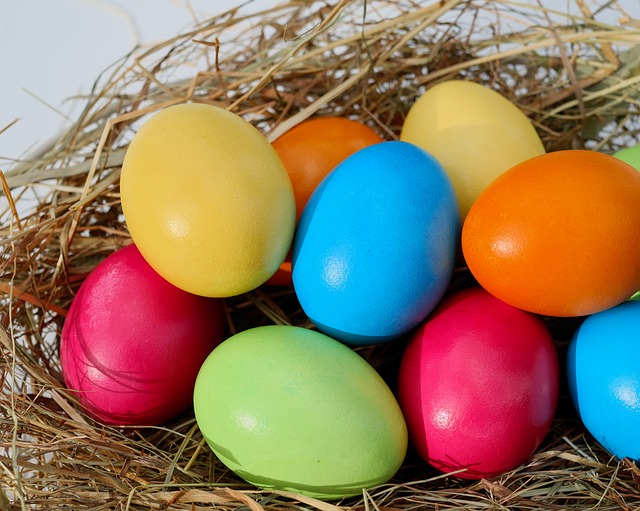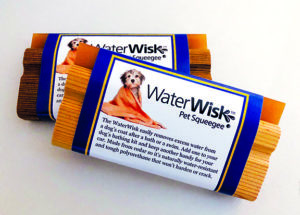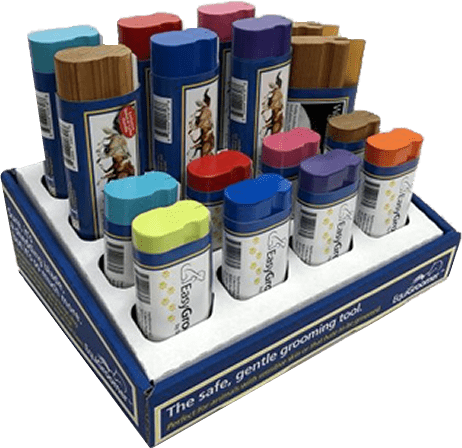Easter is around the corner and that means extra effort in protecting your pets from Easter dangers!
Keep reading below to learn about the potential dangers
associated with Easter for our dogs and cats.
Easter Dangers for Cats and Dogs
In a nutshell, there are 5 specific dangers during Easter putting both canines and felines at risk! These dangers include:
- Chocolate
- Holiday Plants
- Easter Baskets
- Holiday Foods
- Egg Dyes & Food Colorings
By understanding these dangers before the holiday, you can proactively protect your pet’s overall health and well-being! Nothing ruins a holiday like an unplanned, mad dash to an emergency veterinarian!
Next, let’s review each of these dangers separately for both canines and felines.
Easter Danger: Chocolate

Most dog owners know that chocolate is toxic to dogs. But did you also know that chocolate is not cat-friendly?
Chocolate is made from the roasted seeds of the cacao plant and contains caffeine and theobromine ingredients posing a toxic risk to dogs and cats.
Caffeine: It may come as a surprise to pet owners that dogs and cats are more sensitive to caffeine than their humans! So much so that without immediate treatment, large ingestions of caffeine can be fatal to dogs and cats. Even with treatment, caffeine can damage organs including the:
- Liver.
- Heart.
- Kidneys.
- Lungs; and
- Nervous system.

Theobromine: This natural compound (and toxin) is also found in cocoa and chocolate. It is also a close chemical relative of caffeine!
Note: while carob is often substituted for chocolate, and the amount of theobromine is lower, most vets recommend against feeding carob to your dog.
In conclusion, keep all chocolate and caffeine-containing products including:
- Teas and coffees.
- Coffee-flavored ice creams and liqueurs.
- Chocolate-covered coffee beans.
- Sodas and energy/sports drinks; and
- Diet pills and pain medications.
up and away from your feline and canine! Also remember, the darker (and more bitter) the chocolate, the more dangerous it is to your pets!
Suspect your dog or cat has eaten chocolate?
Contact your veterinarian immediately!
Easter Dangers: Holiday Plants

Another common danger involves Easter plants! While you may already know that many lilies are toxic to our felines (including the water a lily is sitting in!), the ASPCA reveals these other lilies (and other plants) are also toxic to dogs!
- Peace Lily
- Calla Lily
- Palm Lily
- Amaryllis
- Autumn and Spring Crocus
- Lily of the Valley
- Tulips
- Daffodils
Easter Danger: Easter Baskets
Kids love Easter Baskets and so do your curious pets! Sweet-smelling treats, colorful eggs, small plastic toys and pretty plastic grass all capture your dog or cat’s attention! Unfortunately, these things also pose serious choking, obstruction and blockage dangers which may require immediate veterinary surgery to save your pet’s life.
Keep all Easter baskets out of reach of curious noses and mouths when you can’t supervise your nosy pet!
Easter Dangers: Holiday Foods
One of the best parts of any holiday is the food! But be mindful of which foods your pets should never sample or eat!

- Easter Delicacies: Hot cross buns and Simnel cake.
- Onions & Chives.
- Leeks & Scallions.
- Mashed potatoes.
- Macadamia nuts.
- Desserts & candy containing xylitol (a toxic, but popular artificial sweetener).
- Fatty foods or meats including ham and lamb (including bones!).
- All alcoholic beverages!
Easter Dangers: Dyes & Food Colorings

Dyeing Easter eggs is an age-old tradition! But what you need to know first is that not all dyes or food colorings (AFCs) are safe for your dog (or family!). Before you use any dyes or food colorings, read the labels and ensure they are non-toxic and safe for consumption.
AVOID the 4 artificial food colorings below to prevent toxic side effects (allergies, negative K9 behaviors and even cancer) in your dog!
- Blue 2
- Yellow 5
- Yellow 6
- Red 40

Spring Grooming is Here!
Save the time and mess with our WaterWisk 5-inch Pet Squeegee!
Naturally Water-and Mold-Resistant!
We guarantee your dog, cat, horse and other pets or livestock will LOVE The EquiGroomer Grooming Tools!
For individual or bulk orders, call 860-573-0604 or click here to send us an email.

